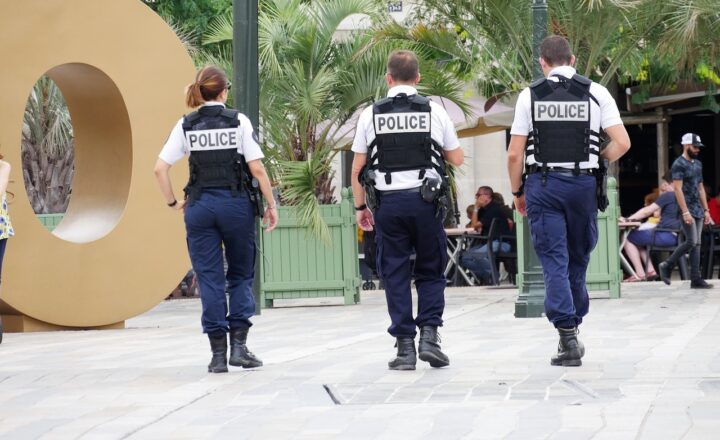The Role of Police in Public Education: Teaching Crime Prevention and Safety Awareness
November 13, 2024

In recent years, the intersection between law enforcement and educational institutions has become a focal point in discussions surrounding public safety and community engagement. The role of police in public education is significant, particularly in the areas of crime prevention and safety awareness. This article will explore how police officers have transitioned from enforcers of the law to educators within the community, providing invaluable resources to schools and families alike.
1. Historical Context: Police in Education
The involvement of law enforcement in public education isn’t a new phenomenon. Historically, police officers have been associated with schools primarily in response to crises or incidents of juvenile delinquency. However, as communities began to recognize the importance of proactive measures and community policing strategies, the role of police in education started to evolve. Today, police officers are often seen as valuable partners in promoting a safe and healthy learning environment.
One key development has been the establishment of School Resource Officer (SRO) programs. SROs are specially trained officers who work in schools and play a multifaceted role that includes law enforcement, mentorship, and education. Through these programs, officers not only assist in maintaining safety but also engage with students on issues such as conflict resolution, drug use prevention, and personal safety.
2. Crime Prevention Education Initiatives
Police departments across the nation have developed various educational initiatives aimed at crime prevention. These initiatives often focus on specific age groups and issues prevalent in their communities. Here are some notable programs that highlight the role of police in crime prevention education:
- D.A.R.E. (Drug Abuse Resistance Education): This program, started in the 1980s, teaches children about the dangers of drug use and equips them with skills to resist peer pressure. Officers often conduct interactive discussions and activities to relate the lessons to students’ real-life experiences.
- Internet Safety Programs: With the rise of digital technology, many police departments have created programs to educate children about online safety, including issues related to cyberbullying, online predators, and privacy concerns. These programs teach students how to navigate the digital world safely.
- Bullying Prevention Programs: Addressing bullying in schools, officers often work alongside educators to facilitate workshops that encourage students to report bullying incidents and to promote a culture of respect and empathy among peers.
By implementing these programs, police can effectively build rapport with students and instill a sense of trust and community involvement throughout the educational process.
3. Building Trust Through Community Engagement
For police to serve effectively as educators, building trust within the community is crucial. Engaging with students, parents, and teachers is essential in fostering a sense of collaboration between law enforcement and education professionals. Here are a few methods police departments utilize to enhance community relations:
- School Visits and Workshops: Regular visits to schools allow officers to establish a presence and promote positive interactions with students. Officers often lead workshops and discussions on behavioral expectations, emphasizing the importance of mutual respect and understanding.
- Community Events: Police departments frequently host events such as safety fairs, where officers present safety demonstrations, share crime prevention tips, and answer questions from both students and parents, creating an engaging learning environment.
- Partnerships with Educators: Collaborating with teachers to create curricula that integrate crime prevention and safety education into classroom discussions reinforces the learning experience for students while ensuring that educational standards are met.
These efforts not only enhance the educational experience but also encourage students to view law enforcement as approachable figures rather than just authority figures.
4. Promoting Safety Awareness: Programs for All Ages
Safety awareness is a critical area where police education extends beyond the school environment. Education and prevention programs are vital for citizens of all ages. For example:
- Neighborhood Watch Programs: Many law enforcement agencies promote the establishment of neighborhood watch programs, empowering community members to be vigilant and proactive in preventing crime. Officers often conduct training sessions to educate residents about crime trends and effective safety measures.
- Emergency Preparedness Workshops: Police departments frequently organize workshops that teach families and communities how to prepare for emergencies. These workshops cover a wide range of topics, from natural disasters to active shooter response training.
- Identity Theft Prevention Seminars: With growing concerns over personal information safety, police education initiatives can include seminars on how to recognize and protect against identity theft, arming citizens with knowledge to safeguard their information.
Through such initiatives, law enforcement agencies can help bolster community safety and empower citizens with the knowledge they need to protect themselves and their families.
5. Measuring Effectiveness and Community Response
As with any public program, it is essential to measure the effectiveness of police-led educational initiatives. Evaluating these programs can involve collecting feedback from participants, analyzing crime trend statistics, and assessing community perceptions of safety.
Overall effectiveness can be gauged by looking at metrics such as:
- Decrease in Crime Rates: A significant reduction in specific crime rates, particularly those involving juveniles, may indicate the success of preventative education efforts.
- Increased Reporting: An uptick in the reporting of suspicious activities can reflect a growing trust in police efficacy and encourage a community-centered approach to safety.
- Community Feedback: Surveys and feedback from both students and parents can offer valuable insights into the perceived value and impact of the educational programs, informing future strategies.
By analyzing these factors, police departments can refine their educational offerings and better meet the needs of the communities they serve.
Conclusion: A Collaborative Future
The evolving role of police in public education reflects a growing understanding of the importance of crime prevention and safety awareness within communities. Through partnership with educational institutions, police can instill valuable skills in students while fostering a culture of trust and collaboration.
As communities continue to face complex challenges, the need for police officers to serve as educators is more critical than ever. By prioritizing education and awareness, law enforcement can help create safer environments that empower individuals, families, and communities to thrive.







